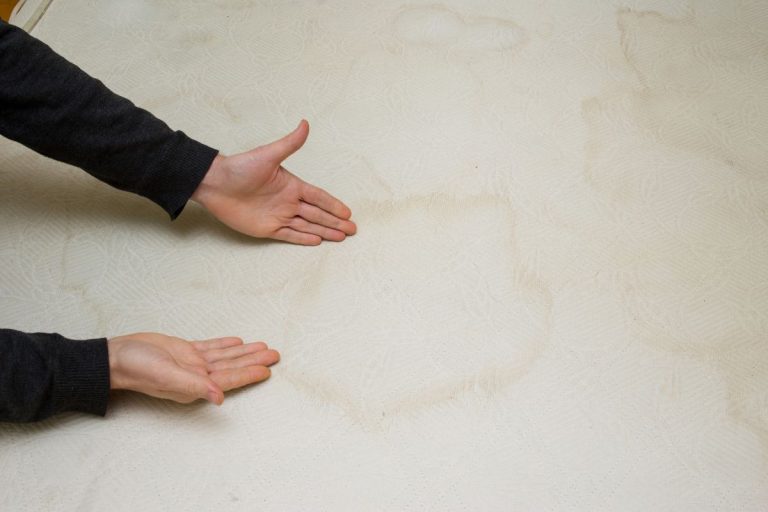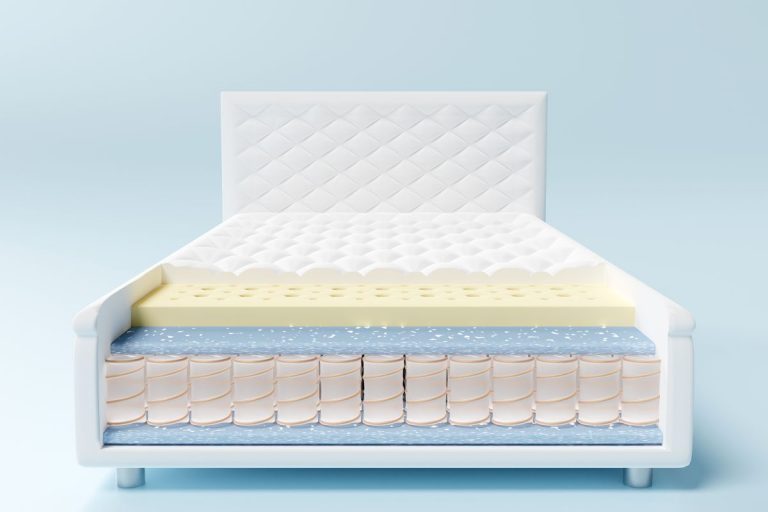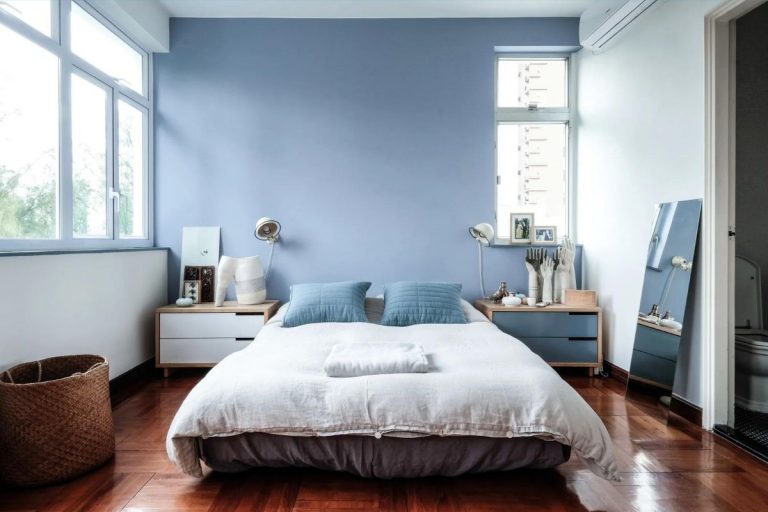Sagging issues of a mattress can either be ‘virtual’ or ‘visible.’
The former comes because of poor support and comfort as well as softening of the foam but is not visible. Visible impressions or sinking is the one that you can tell by just looking at the mattress. Understanding this is important because it comes in handy when it comes to warranty as we will later learn on in this primer.
Since the ’70s, a lot of happened in the mattress space. Plenty of changes have characterized the industry. Back then, it’s true to say that on average, the lifespan of a mattress was 12 – 15 years. 20+ years was not uncommon.
However, as time passed, the players in the industry never liked that. They wanted a faster turn-in mattress so that they can make more profits.
They have achieved that. Most mattresses today boast an average lifespan of only 3 – 5 years. This is because the quality of the padding material in your mattress has reduced drastically. Due to that, cases of mattress sagging or sinking have been on the rise lately.
Among other things, sagging causes you to lose much-needed comfort and support. You begin to toss and turn on your bed constantly throughout the night. In addition to that, pains and aches become common.
If you have the money, you get to discard your current ‘sagged’ mattress for a new one. What if you are limited in the budget? What if you are tired of spending $2000+ on a new mattress after every 1-2 years because of sinking? The solution is learning how to fix the sinking in your mattress!
Some of the causes of mattress sinking include:
- The uneven surface where you place the mattress
- Liquid penetration, direct sunlight and high moisture content
- Bent steel or old/broken box spring support
- Poor mattress center support
- Inferior materials
- Aging of foam causing the disintegration of the components inside
Before looking at how to fix a mattress that sinks in the middle, let us first have a look at some vital information related to sinking:
Health Problems Of A Sinking Mattress (and The Need To Fix Yours)
A sagging mattress can cause several health-related issues. To avoid contracting these conditions, it is prudent to fix your sagging mattress as soon as possible:
- Spine or back pain
- Can be a contributing factor in neck pain
- Poor sleep quality
Something you should know as well:
- Is a Firm Mattress Better for Back Pain?
- The Best Sleeping Positions for Lower Back Pain
- 14 Best Foods To Eat (And 8 To Avoid) Before Bed For Better Sleep
Does Warranty Cover Mattress Sagging?
The warranty of a mattress covers its physical defects. One of the most common defects of a mattress touching its physical nature is sagging.
It becomes a warranty issue when yours sinks beyond a particular threshold visibly. As in someone does not need to sit on it. He or she can tell by just having a look at it.
For many manufacturers, 1.5 inches is the threshold. For others such as Tempurpedic, it stands at three-quarters of an inch. So how do you measure the sag? You do so by placing a string on the mattresses’ surface and then measuring from the sag’s bottom to the string using a ruler.
Therefore, for you to return your mattress to be covered by warranty once you notice it has sagged, it needs to meet the above measurements.
In addition to the set threshold, the warranty will not cover your mattress in case it has the following issues:
- Stains
- Inadequate support
- You have removed the law tag
Many mattress warranties do not cover popping or breaking of coils or the seams protruding from the mattress. Other physical defects not covered by a warranty include the breaking of box spring and the bunching up of foams at the top.
Fixing A Mattress That Sags At The Center
1. Use a Mattress Helper
Many people are skeptical about using Mattress Helper to fix the issue of sinking in the middle. Well, it works! With the mattress helper, you can restore the sagging areas of your mattress thus making your mattress feel heavenly once more. It offers the lacking support from below the mattress hence giving you proper comfort and alignment.
For better results, you can combine the use of a mattress helper and mattress topper.
2. Use Plywood
One of the most effective ways of fixing a mattress that sinks in the middle is by using plywood. All you need to do is find the right plywood, cut it into your bed’s measurements and you’ll be set. Based on the dimensions of your mattresses, it might be prudent to have two plywood pieces.
For those with box spring beds, placing plywood between the box spring and mattress is the prudent thing to do. If you own a slat-based bed, use the plywood sheet to lace the slats.
- The maiden step entails establishing your mattress type.
This is because in most cases, the mattress type is normally the underlying causing factor of sagging. Once you have established the mattress type, you can know whether plywood would be magical at fixing the sinking at the center. The good thing is that plywood is handy for many mattresstypes. Nonetheless, it would be ineffective for air, waterbed and innerspring mattress. The ineffectiveness comes because the support will be less or more absorbed compared to be transferred.
- The second step entails measuring your sag’s depth.
Doing this will help you establish the optimum plywood thickness that reverses the issue at hand. Placing a yardstick perpendicularly and utilizing a tape measure should help you attain the appropriate measurements.
- On the third step, the primary to do is cut your plywood using a saw.
Ensure it is somewhat smaller compared to the bed’s dimensions as well as that of the mattress by roughly an inch. Insert the plywood amid the mattress and foundation. If you sagging is because of poor support, plywood should offer the mattress a firm base. If your bed has slates on its base, place the plywood sheet on the bed frame’s slats and then put your mattress on top. Doing this provides the necessary support from below thus curbing the sagging issue.
Also Read: Plywood Under Mattress Instead of Box Springs: Does is Work As Expected?
3. Use A Thick Mattress Topper
Thick mattress toppers can be handy in fixing the sagging of a mattress not only in the middle but all other areas as well. This method is less costly compared to purchasing a completely new mattress set.
Note: Not all mattress toppers can solve the sinking issue. You need to be very particular on the topper you choose. Some of the best options include down, air and memory foam mattress toppers that are 3 inches and above.
Prices of a mattress topper will be informed by its size, the level of stuffing inside the topper and cotton thread count.
4. Replace Slats
Sagging in the middle can be because of slats inside the frame below the box springs. Are they warped? You need to replace them! For additional support, add 1 – 2 slats particularly in the middle. It is also worth considering replacing the 1 by 4s (normal bed slats width) with 1 by 8s or 1 by 6s to enjoy even more additional support.
5. Consider Anti-Sagging Lumbar Support
It might be a new product in the market when it comes to fixing the sinking issue, but the anti-sagging lumbar support is achieving impressive results. This fix not only adds more support but also comfort to your mattress guaranteeing you a peaceful night of rest. It utilizes a 2.5-pound density to add the desired support in your mattress.
Final Words
The above strategies are handy as the short to medium-term fix for a sinking mattress in the middle. At some point, buying a new mattress with non-sinking properties will be necessary. When that time comes, you need to be informed about the factors that characterize such a mattress.
For your mattress to serve you for many years to come without having issues related to sagging, ensure you have answers to these questions:
- Does the construction of the mattress feature coils? – Choose a mattress with innerspring coils as they add some durability and additional support level.
- What type of foam does the mattress have? – The ideal type of foam to give you service for years is latex. The natural product is durable, bouncy and responsive. You can trust it to handle even heavier weights devoid of sagging.
- What is the foam thickness of your prospective mattress? – Low foam density in a mattresses’ construction contributes hugely to its sagging nature. Choose a mattress with a 4 – 5 lb. foam density to be on the safe side.
More Thing You Should Know:
- Mattress Thickness Guide: Which One Should I Choose?
- Mattress Firmness Guide: Wha’s You Best Comfort Level?
- Your Guide to the 8 Most Popular Types of Mattress
Our Recommendations:
- Best Mattress That Won’t Sag for Heavier People – WinkBeds Plus
- Best Mattress That Won’t Sag (Latex Hybrid) – Brooklyn Bedding Bloom Hybrid
- Best Mattress That Won’t Sag (Memory Foam) – Loom & Leaf




